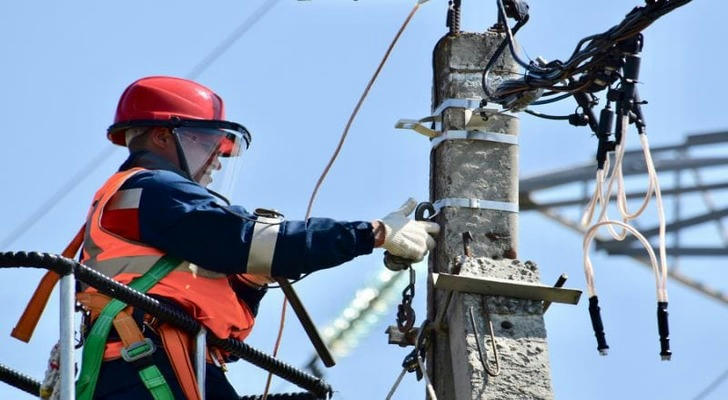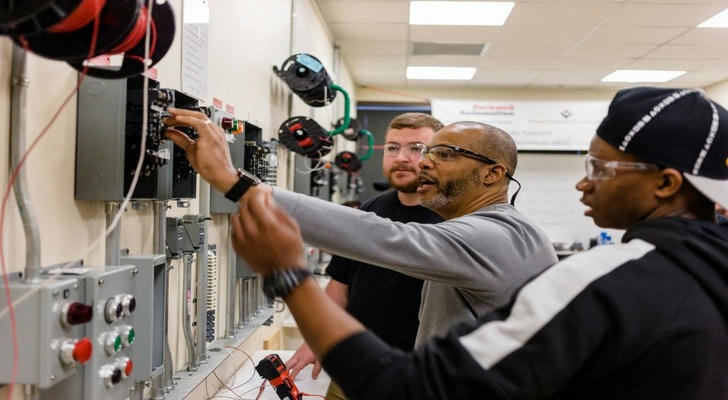Apprenticeship vs. Trade School: Which Path is Best for Aspiring Electricians
Electricians can be seen everywhere in our daily lives.They install, maintain and repair electrical systems in homes, businesses and industrial settings.The high social demand has driven many people to want to become an electrician, so electrician training has become a short-term, high-return, and high-demand training program.Electrician training includes classroom education on electrical theory, safety codes, and wiring regulations, as well as hands-on experience through apprenticeships or trade schools. The purpose of this training is to equip aspiring electricians with the knowledge and practical skills needed to work safely and efficiently, meet your ambitions and financial needs.The purpose of this article is to compare the two forms of electrician training - apprenticeship and vocational school, to help aspiring electricians make a decision.
Understanding the Two Paths
An electrician apprenticeship is a structured training program that combines hands-on work experience with classroom instruction. Typically lasting 4 to 5 years, apprenticeships are offered through trade unions, non-union organizations, or private companies.

During an apprenticeship, trainees work under the supervision of licensed electricians, learning essential skills such as wiring, troubleshooting, reading blueprints, and following electrical codes. Classroom instruction covers topics like electrical theory, safety regulations, and industry standards.
Apprenticeships are often paid positions, making them a cost-effective way to enter the trade without accumulating student debt. Many apprenticeships are registered with organizations like the National Electrical Contractors Association (NECA) or the International Brotherhood of Electrical Workers (IBEW), ensuring quality training.
An electrician trade school is a vocational training program that provides students with foundational knowledge and hands-on skills needed for a career as an electrician. Typically lasting 6 months to 2 years, trade schools offer structured classroom education combined with practical lab training in electrical wiring, safety codes, blueprint reading, and troubleshooting.
Unlike apprenticeships, trade schools do not offer paid on-the-job training but prepare students for entry-level positions or apprenticeships. Graduates may earn a diploma or certificate, which can help them qualify for state licensing exams and job opportunities. Trade school is ideal for those who prefer formal instruction before entering the field.
Comparing Apprenticeship and Trade School
When choosing between an electrician apprenticeship and trade school, it’s essential to consider factors like cost, time commitment, practical experience, employment prospects, and certification requirements.

1.Cost
Apprenticeships are typically low-cost because they are often sponsored by employers, unions, or trade organizations. In contrast, trade schools require tuition fees, which can range from $5,000 to $20,000, depending on the institution and program length. However, financial aid and scholarships may be available for trade school students.
2.Time Commitment
Trade school programs last 6 months to 2 years, offering a quicker path to the workforce. Apprenticeships take 4 to 5 years, but they allow trainees to earn while they learn, reducing financial strain.
3.Practical Experience
Apprenticeships provide extensive hands-on training under licensed electricians, while trade schools offer simulated lab environments with some practical training. However, trade school graduates usually need additional on-the-job experience.
4.Employment Prospects
Apprenticeship graduates often have direct job placement opportunities, while trade school graduates may need to find an employer willing to sponsor an apprenticeship before obtaining full licensure.
5.Certification and Licensing

Both paths prepare students for state licensing exams, but apprenticeships provide more real-world experience, making the transition to becoming a licensed journeyman electrician smoother.
Which Path is Best for You?
Ideal candidates for an electrician apprenticeship are those who prefer hands-on learning, enjoy problem-solving, and are willing to commit to on-the-job training for 4-5 years. Apprenticeships are best for individuals who want to earn while they learn, work well under supervision, and seek a direct path to full-time employment.
Ideal candidates for electrician trade school are those who prefer a structured classroom environment, want to learn the fundamentals quickly, and can afford tuition costs. Trade school is best for individuals who want to gain technical knowledge first, complete training in 6 months to 2 years, and then pursue hands-on experience.
Conclusion
Choosing between an electrician apprenticeship and trade school depends on individual learning preferences, financial situation, and career goals. Apprenticeships offer extensive hands-on experience, paid training, and direct job placement, while trade schools provide structured education, a quicker entry into the field, and preparation for licensing exams.
It's essential to research local programs, compare costs, and consider the long-term benefits of each path. Look into union and non-union apprenticeships, accredited trade schools, and state licensing requirements before making a decision.
Ultimately, the best choice depends on personal circumstances. If you prefer earning while learning and gaining real-world experience, an apprenticeship is ideal. If you value structured coursework and a faster route to education, trade school may be the right fit. By carefully evaluating your options, you can set yourself up for a successful and rewarding career as an electrician.
